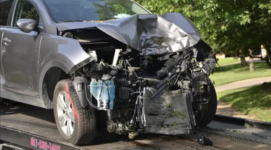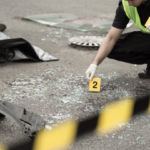Reducing Road Deaths: Prevention is Better than a Cure

Sixteen people lost their lives on our roads over the Easter long weekend with fatal accidents in all states and territories, including four people who died in the early hours of the morning on Good Friday in a two-car accident in the NSW southern tablelands. Police are still investigating what caused the crash.
Governments spend billions building and maintaining our roads each year, and in recent years have invested heavily in an extensive network of cameras to detect speeding, mobile phone use, and bad driving. But we still face hundreds of tragedies every year.
Last year a total of 288 fatalities were recorded in New South Wales – the highest number across the country. Victoria recorded 240, Western Australia 174, South Australia 71, Tasmania 50, the NT 47 and the Australian Capital Territory 18. The top causes of fatalities are consistently ranked as speeding, driver distraction, driving under the influence of drugs or alcohol and driver fatigue.
The current approach to drivers caught breaking the law is highly punitive, and while the New South Wales government might say heavy penalties including fines, loss of demerit points are the best solution, it’s fair to question whether this approach is actually working effectively to bring the road toll down.
So, what can we do differently?
How can we make our roads safer for everyone?
Late last year, after a single car crash in Buxton in Sydney’s south-west killed five teenagers and the driver, the sole survivor, 18-year old Tyrrell Edwards was charged with dangerous driving occasioning death, The Australasian College of Road Safety called for the New South Wales State Government to prohibit young men from being issued with driver licences before they reach the age of 21 years.
The proposal was aimed at reducing statistics which show that drivers under the age of 25 account for almost 25% of crashes in NSW, despite only representing about 15% of all drivers in the state, and young men have higher rates of death from collisions than young women, even when the differences in the circumstances of the road crash are taken into account.
According to the College’s research, over the past decade, young Australian men have been involved in a greater number of road crashes than young women. Figures between 2007 and 2016 suggest that, on average, 5.1 women aged 17-25 died on our roads per 100,000 people.
The average for young men is more than three times that, at 15.94.
Raise the age?
While it might seem like an obvious solution to raise the age for licensing, legislating such a proposal would be very difficult, and undoubtedly highly controversial.
Other suggestions from road safety bodies include: A compulsory driver education program for learners to be undertaken before they are able to obtain a Provisional (P) licence and better education.
There’s long been debate about whether or not our licence requirements for learners and P-platers should be higher. All learner drivers under the age of 25 must complete 120 hours of supervised driving (including 20 hours at night), must adhere to strict speed limits, must not drink any alcohol prior to driving, and must not have mobile phones with them, accessible in any way, in the car.
However, despite the tough rules, and the number of high-budget advertising campaigns – are the right messages getting through?
The ‘Stop it or Cop it’ TV campaign – an initiative spawn from the partnership between NSW Police and Transport for NSW aims to reduce risky behaviour and improve road safety by highlighting the fact that police can catch someone doing the wrong thing, at any time, and the penalties will be severe, and immediate.
Driving mistakes can be deadly
But perhaps the message needs to focus less on getting caught, and more on the very real fact that a minor mistake on the road can be deadly – and, what’s more can have devastating consequences for the friends and families of those who are killed maimed or permanently disabled. Trauma – which doesn’t always come with visible scars – can have lifelong negative impacts for all involved.
While learner drivers and P-platers do have the highest risk rates, they are not the only ones who die on our roads, and perhaps there should be tougher requirements for licence renewals too.
Tougher requirements for licence renewal
The Queensland government is currently considering a “refresher course” with a quick online test as part of the licence renewal application process, to ensure that drivers know and understand any changes to road rules since last getting approval for a licence. The idea is currently up for public feedback, and so far the response is fairly positive.
Currently, no such ‘renewal test’ exists anywhere in Australia and yet in New South Wales, as in other states, full licence holders can elect to renew their licence for a period of up to five years.
Not knowing the road rules is not an appropriate reason for intentionally or inadvertently breaking them, even if you’re in a different state or territory and would never be an acceptable defence in court.







